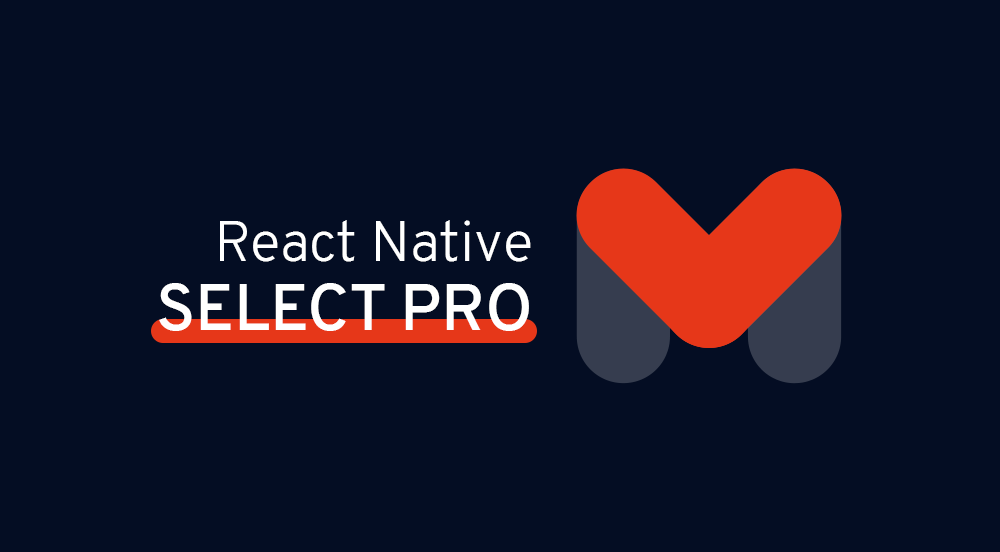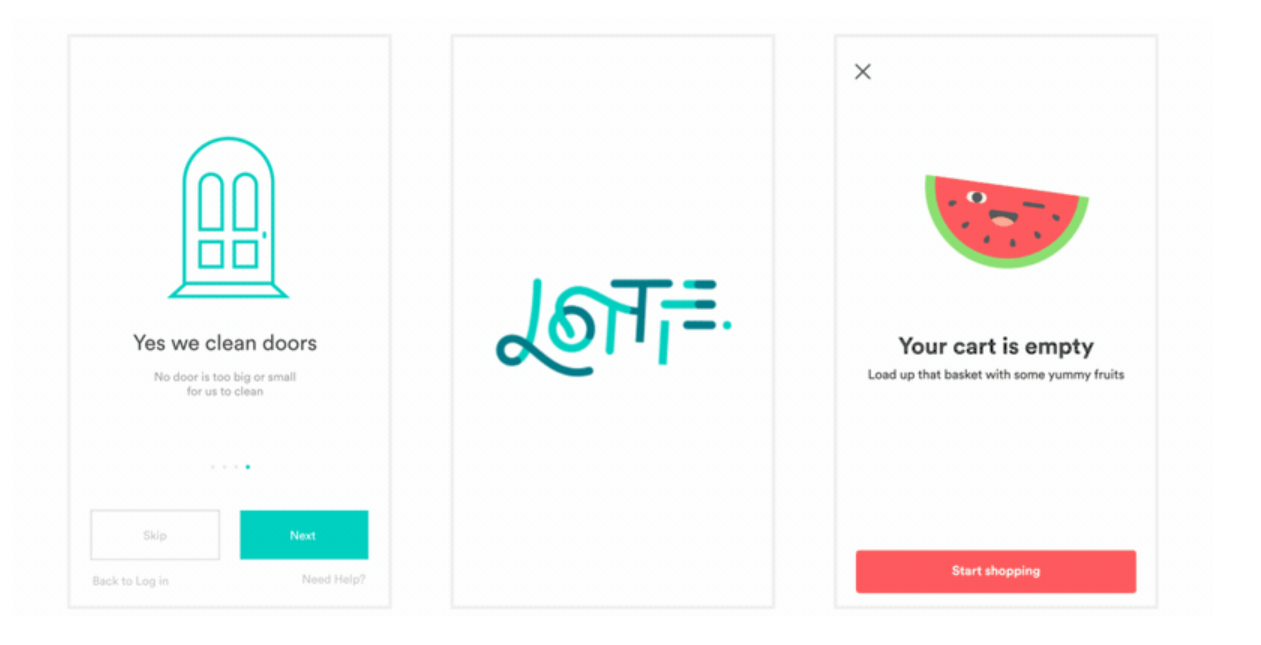Introduction
React Native is a widely used mobile app development framework that enables developers to create high-performance apps for both Android and iOS apps and platforms. Thanks to its flexible and user-friendly design, React Native has been embraced by developers and businesses worldwide.
To maximize its potential, developers turn to various tools and libraries that improve the development process and add more features to their apps. In this article, we'll explore the top five React Native tools and libraries expected to shape the mobile app development scene in 2025.
Are these native applications yet?
Over the past five years, React Native has evolved significantly, becoming a leading framework for cross-platform mobile app development. In 2019-2020, its popularity surged as more companies adopted it for its efficiency in building apps with a single codebase. Between 2020 and 2021, major architectural improvements like Fabric and TurboModules were introduced, enhancing performance and stability by optimizing interactions with native components.
The release of React Native 0.62 brought features like React DevTools integration and improved accessibility, further enriching the developer experience. From 2021 to 2022, enhancements in developer tools and debugging support made the development process smoother and more efficient. More recently, ongoing updates have continued to focus on performance optimizations, community feedback integration, and maintaining compatibility with the latest technologies, solidifying React Native's position in the mobile development landscape.
There is still a lot to do, however, we can see that the native approach is being abandoned because of the Expo framework focus.
Statistics of React Native communities as of the end of October 2024:
Github: React Native has 119 thousand stars
Reddit: the subreddit reactnative community has 137 thousand users
StackOverflow: 138,271 questions tagged [react-native]
Twitter: 208,5 thousand React Native followers
You can find out more about React Native in one of our previous articles here .
From UI libraries to debugging tools, we'll cover everything a React Native developer needs to build exceptional mobile apps. Whether you're an experienced developer or just starting out, this article will provide a detailed guide to the essential tools and libraries to use in 2025
Expo in React Native apps
URL: https://github.com/expo/expo

Figure 1: Expo Logo | Source: Expo
33,7k stars
version 51.0.38
It happened! Developers in 2024 were surprised by this announcement! The React Native team officially announced that Expo will be the primary framework to use when it comes to React Native development. With this said, there is no looking back and the Expo framework will be widely used across every React Native app now!
Expo is an open-source framework and platform designed to streamline the development of React Native applications. It simplifies the process of building cross-platform Android and iOS applications by offering a set of pre-configured tools and libraries.
Key Features of Expo
Pre-built Components and APIs: Expo provides a wide range of built-in libraries and components, such as camera access, geolocation, push notifications, and more, allowing developers to add functionality to their apps without writing native code.
Expo Go: With the Expo Go app, developers can preview their apps in real time on physical devices without needing to set up emulators or build the app first. Simply scan a QR code, and the app is instantly available for testing.
Managed Workflow: Expo offers a managed workflow, which means much of the configuration, native code, and dependencies are handled by the Expo platform. This is ideal for developers who want to focus more on the app itself and less on the setup.
Over-the-Air Updates: Expo projects allow developers to push updates to their apps instantly without going through the App Store or Google Play Store approval process. This feature ensures faster updates and bug fixes.
Expo Snack: Expo Snack is a browser-based tool that lets developers write and test React Native code in real time without needing to install anything locally. It's great for prototyping or sharing code snippets with others.
Native Dependencies: Apart from pre-built components and APIs you can still build and use native dependencies with Expo React Native
Overall, Expo is ideal for developers looking to build mobile apps quickly without getting bogged down in the complexity of native development while still offering the flexibility to customize as needed. It's worth mentioning that officially Expo still recommend builds with native approach (Development build) with more custom environment for long-term projects. Here is the expo cli quickstart instruction: https://docs.expo.dev/workflow/overview/.
EAS - Expo application services and app deployment
EAS, or Expo Application Services, is a suite of cloud services provided by Expo that simplifies the process of building, deploying, and updating React Native applications. It includes features like EAS Build, which allows developers to create binaries for iOS and Android without needing a local development environment, and EAS Submit, which streamlines the app submission process to app stores. EAS also supports over-the-air updates, enabling developers to push updates to their apps quickly and efficiently without going through the app store approval process.
Can I use React Devtools?
Definitely! You can use React DevTools with Expo applications by enabling remote debugging when running your app in development mode. To do this, install React DevTools separately and launch it while your Expo app is running; you can connect it via the developer menu or by using npx react-devtools in your terminal.
What about performance in React Native with Expo?
Performance in React Native applications built with Expo is generally good, especially for most use cases. But there might be a case where the Expo configuration won't do a great job. In this situation, we can still build and use native developer tools and a native toolbox in Android and iOS devices!
Do I have to change the project root during version migration?
We all know this pain. For instance, in Next.js upgrade changes from pages to app router was a little bit of trouble. If you want to migrate fully to Expo config you do not need to change the project root, but you will need to adjust configurations and dependencies to align with Expo's requirements. It's important to follow the official Expo documentation for migration steps to ensure compatibility with the managed workflow.
Is Metro Bundler still the main packager?
Yes, the Metro bundler is used in Expo builds as the native packager. When you develop an application using Expo, the Metro bundler handles the bundling of JavaScript code and assets, just as it does in standard React Native projects.
Should I change my IDE from Visual Studio Code?
No, it's still recommended by the React Native team! (you are not obliged to build the app in XCode - joke!)
React Native Select Pro as a one of your plugins
URL: https://github.com/MobileReality/react-native-select-pro

Figure 2: React Native Select Pro logo | Source: React Native Select Pro page
293 stars
version 2.3.0
Open-source projects are everywhere, and we've been leveraging them from the start. Now, we want to contribute back to the community by sharing our work. React Native Select Pro is a user interface library that provides developers with customizable dropdown components for React Native applications. With this tool, developers can easily integrate dropdowns into their apps without worrying about complicated styling or event handling.
React Native Select Pro offers a range of customization options, including the ability to adjust the dropdown's color, size, and font. It also supports multi-select dropdowns, allowing users to select multiple items from a list.
Overall, @mobile-reality/react-native-select-pro is favored for its combination of customizability, ease of use, rich features, and performance. These attributes make it an attractive option for developers looking to enhance their applications with effective and visually appealing dropdown components.
Like our approach and other open-source projects? Don't hesitate to in terms of any questions.
React Native Vector Icons and no mess in your code editors
URL: https://github.com/oblador/react-native-vector-icons

Figure 3: React Native Vector Icons banner | Source: React Native Vector Icons repository
17,4k stars
version 10.2.0
As it's also part of Expo now we think that usage of this library will be significant in 2025. Expo vector icons library is built on top of this library. React Native Vector Icons is a popular library that provides developers with a wide range of customizable icons for React Native applications.
Why Developers Love React Native Vector Icons
Developers can easily add high-quality icons to their apps with just a few lines of code, eliminating the need for custom icon creation or downloading additional images. Additionally, using a standardized set of vector-based icons from a trusted library ensures design consistency and scalability, maintaining quality across all screen sizes and resolutions.
React Native Vector Icons is a must-have tool for React Native developers looking to enhance their app's user interface with high-quality, flexible icons.
React Native Maps in any custom environment
URL: https://github.com/react-native-maps/react-native-maps

Figure 4: React Native Map futuristic version | Source: Own library
15,1k stars
version 10.2.0
React Native Maps is a popular library that allows developers to integrate interactive and customizable maps into React Native applications. It's the same case as the previous which is that Expo listed this library as primary to use.
Key Features of React Native Maps
Cross-Platform Support:
The library works with both Google Maps (for Android) and Apple Maps (for iOS), ensuring a consistent map experience across platforms. It automatically selects the appropriate map provider based on the device.
Customizable Markers and Overlays:
React Native Maps allows developers to add various types of markers to the map, such as pins or icons, to denote specific locations. These markers are fully customizable in terms of color, size, and style.
Developers can also create overlays like circles, polygons, or polylines to highlight regions or routes on the map.
Geolocation Integration:
The library supports integration with the device’s geolocation features, enabling real-time tracking of a user’s location. This is useful for apps that require location-based services like navigation, ride-sharing, or fitness tracking.
Smooth Performance:
Despite the complexity of maps, React Native Maps is optimized for performance. It can handle large datasets and complex maps efficiently, ensuring smooth panning, zooming, and rendering even in resource-intensive scenarios.
Custom Map Styling:
Developers can apply custom map styles to create a unique look and feel for their maps. This includes altering the map’s color scheme, hiding specific features, or adjusting the display of certain map elements like roads and landmarks.
Why Developers Love React Native Maps
Ease of Use: It simplifies the process of adding map-based functionality to apps without needing to write native code.
Customization: Full control over map appearance and functionality, making it easy to align with the app’s design and user experience.
Geolocation: Real-time tracking of user or object locations enhances apps in industries like transportation, logistics, and social networking.
React Native Maps is an essential library for any mobile app that requires interactive maps or location-based features. Its ease of use, cross-platform support, and rich customization options make it a powerful tool for React Native developers.
Lottie React Native is still in your bundle
URL: https://github.com/lottie-react-native/lottie-react-native

Figure 5: Lottie banner | Source: Lottie
16,7k stars
used by 120k users
Lottie React Native is still in the game! It is a library that enables developers to easily incorporate Lottie animations into React Native apps. Also, Lottie is commonly used in native environments. It allows designers to export animations as JSON files, which can then be imported and rendered in web, mobile, and other applications.
A major advantage of Lottie React Native is its performance. Because Lottie animations are vector-based, they are lightweight and scalable, resulting in smoother and more efficient rendering compared to traditional frame-by-frame animations.
Lottie React Native is a powerful tool for developers aiming to enhance the user experience of their mobile apps with high-quality animations.
What about tools like a native debugger eq. Flipper for profiling?

Figure 6: Flipper mascot | Source: Flipper
If you liked Flipper I have a sad message for you. It's stated under: https://github.com/react-native-community/discussions-and-proposals/blob/main/proposals/0641-decoupling-flipper-from-react-native-core.md
"We are planning to update the React Native app template to no longer use Flipper by default, and replace Flipper's JS debugging experience with an equivalent one-click debugging flow. This intends to simplify and improve the debugging and upgrade experiences for React Native developers."
What about other tools in React Native?
We are constantly working to provide you latest information possible. If you want to have more information then don't hesitate to contact us!
Conclusion
In conclusion, has established itself as a leading mobile app development framework thanks to its flexible and intuitive approach to building high-performance apps. As the mobile app development landscape evolves, developers must stay up-to-date with the latest tools and libraries to make their development experience smoother and their apps more feature-rich. In this article, we have explored the top 5 React Native tools and libraries that are expected to dominate the mobile app development scene in 2025. Whether you're a seasoned React Native developer or just getting started, these tools and libraries can help you streamline your development process and create the best possible mobile apps. So, start exploring these tools and libraries today and take your React Native development skills to the next level.
Explore More Development Tools Rankings
Choosing the right tools and libraries can significantly enhance your development process. At Mobile Reality, we analyze and rank the best tools for various technologies, ensuring you have the insights to make the best choices. Dive into our curated lists to discover more essential resources:
- Top 5 React.js tools and libraries for development in 2025
- Top 5 Vue.JS tools and libraries in Web Development in 2025
- Top 5 React.JS tools and libraries in 2024
- Top 5 React Native tools and libraries in 2024
- Top 5 Vue.JS tools and libraries in 2024
- Top 5 Node.JS Backend Tools and Libraries in 2024
- Top 3 cloud (AWS / Azure) services 2024
- Top 5 Node JS Packages and Tools by Mobile Reality in 2025
Whether you’re working with React.js, Node.js, or other popular frameworks, our rankings and reviews are crafted to help developers maximize productivity and build exceptional software. If you’re looking for personalized recommendations for your next project, reach out to our team. We’re here to empower your development journey with cutting-edge tools and expert guidance.






